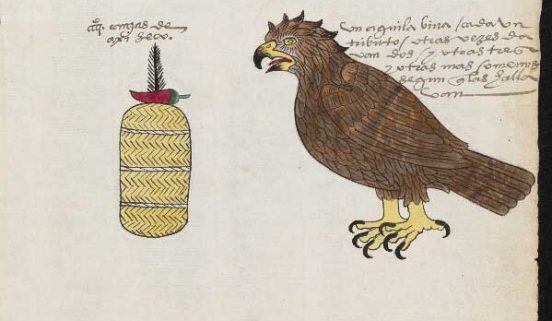The history of the Aztecs – or at least the historiography in the Codex Mendoza – has a little pointer to the chiltepin…
The Codex Mendoza is one of the most important pictorial histories of the Aztecs that still remains. Created after the conquest of the Mexica’s triple empire, it describes their history and life in illustrations and texts in Spanish and Nahuatl.
Chilli as Tribute
The Codex Mendoza tells quite a bit about the conquests of the Aztecs and the tribute payments the conquered peoples had to pay – which included chilli.
(Chilli with a double “l” is a proper spelling in Nahuatl, by the way.)

The chilli here looks pretty usual, like many a cultivated type. One of the special things about the chiltepin, though, is why – or at least, for how long – such a wild type has been found as a special kind of chilli…
Etymology of the Name Chiltepin
The name chiltepin goes back to the Aztec’s Nahuatl.
“Chil-” is derived from the “chilli,” the name of the spice.
“Tecpintl” is the flea.
So, if you have heard of “chiltecpintl” as the “flea chilli,” that is indeed what it is. Tiny, but with a strong bite?
Interesting in the Codex Mendoza: It mentions a place called “chiltecpintla.”
The City of Chiltepin

“Chil-tecpintl-tla.” That “-tla” (represented by two teeth) indicated a place. So, this is the city, the place, of the flea chilli.
It is not entirely known where it was, but it was not in the north of Mexico which is known for the chiltepin.
Rather, this city was in the former Aztec province Tepeacac, which was near the present-day Puebla.
Close by Oaxaca, this is almost Guatemala, Nicaragua… which is interesting because chiltepin – and chilli similar to this wild type, called chiltepin or chilli-piquin – can be found in these areas.
They are not exactly known as the (home)towns of chiltepin, though.

Leave a Reply
You must be logged in to post a comment.